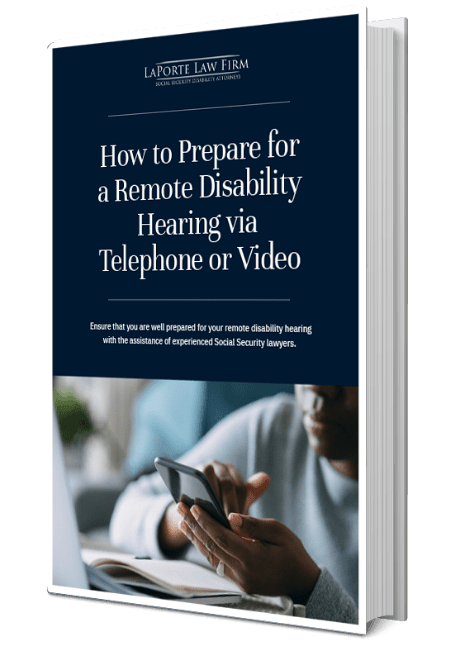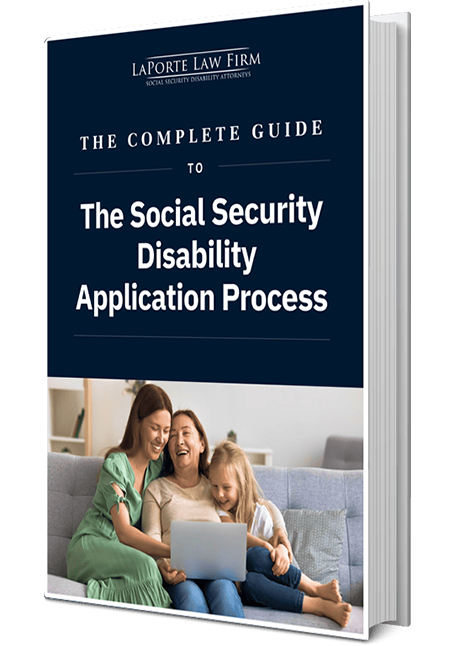
Ever opened your bank account and thought, “Wait — where’s the rest of my Social Security check?” You are not alone. It can be a jarring moment, especially when you are counting on every dollar. While Social Security benefits are meant to be a reliable source of income, it is not immune to changes. From new Social Security program rules to cost-of-living tweaks to other income you might not have realized impact your benefit, there are several reasons your payment might be smaller than expected.
In this post, we will break down the most common reasons your check might have taken a hit and wand offer guidance on what steps you can take to address these issues.
Common Reasons for Reduced Social Security Payments
If you’ve noticed a reduction in your Social Security payments, it could be due to one of these common reasons:
Early claiming of retirement benefits
Claiming Social Security retirement benefits before reaching your full retirement age (FRA) can significantly lower your monthly payments for life. While you are eligible to start receiving benefits as early as age 62, doing so means accepting a permanent reduction, often between 25% and 30%, depending on your birth year. This trade-off may be worth it for some, but it is important to understand the long-term financial impact.
For instance, if your FRA is 67 and you claim at 62, you could receive only 70–75% of your full benefit. That lower amount will continue for the rest of your life, even if your circumstances change later.
Because the early retirement reduction is permanent, it can affect your financial security for decades, especially as costs rise in retirement. On the flip side, delaying your benefits past your FRA earns you delayed retirement credits, increasing your monthly payments by up to 8% per year until you turn 70.
So, if you can afford to wait even just a year or two beyond your FRA, it can significantly boost your lifelong income. Deciding when to claim is personal and depends on your health, financial situation, and goals, but understanding the math behind it helps you make a smarter choice.
Changes in earnings
If you are collecting Social Security retirement benefits before reaching your FRA and continue to work, your benefits may be temporarily reduced if your earnings exceed certain limits. Here’s how it works in 2025:
Earnings limit if you’re under FRA all year
- Annual earnings limit: $23,400
- Reduction rule: The Social Security Administration (SSA0 will withhold $1 for every $2 you earn over this limit.
- Example: If you earn $25,400, that’s $2,000 over the limit, so SSA would withhold $1,000 from your benefits.
Earnings limit if you reach FRA in 2025
- Higher limit: $62,160 (applies only to earnings before the month you reach FRA)
- Reduction rule: The SSA deducts $1 for every $3 you earn above this limit. After you reach FRA, no reduction applies, no matter how much you earn
Special rule for the self-employed
If you are self-employed, the SSA does not just look at your income, they also consider how much time you are spending on your business. In general, working more than 45 hours per month can mean you are not considered retired yet. This could lead to benefit reductions, even if your income appears modest
You can find more information in SSA’s publication “How Work Affects Your Benefits.”
Tax bracket adjustments
If you have chosen to have federal taxes withheld from your Social Security benefits, changes to your tax bracket can affect the amount you actually receive each month. For example, if your income from part-time work, retirement accounts, or other sources pushes you into a higher tax bracket, your withholding amount will increase, reducing your net Social Security check, even if the gross benefit has not changed.
It is important to remember that your gross benefit (the full amount you are eligible for) can remain steady, but the net amount (what lands in your bank account) can change. This variation often comes from:
- Adjustments in federal income tax withholding
- Increases in Medicare premiums
- Other deductions, such as repayment for overpayments or voluntary withholdings
Increase in Medicare premiums
Increase in Medicare Part B premiums
If you are enrolled in Medicare Part B, your monthly premium is usually automatically deducted from your Social Security check. So when Medicare premiums go up, as they often do annually, your Social Security payment goes down, even if your base benefit has increased due to a COLA (Cost-of-Living Adjustment).
For example, if your COLA raises your benefit by $50 a month but your Part B premium increases by $25, your actual increase is only $25.
| Description | Amount |
|---|---|
Gross Monthly Benefit | $1,800 |
| Deductions: | |
| Medicare Part B Premium (2025)* | −$185 |
| Federal Tax Withholding (10%) | −$180 |
| Net Monthly Payment | $1,435 |
The Medicare Part B Premium is based on the standard 2025 rate (which may vary depending on income).
- Federal withholding is optional. You can choose how much (if any) to withhold.
- Other possible deductions could include Part D premiums, IRMAA (Income-Related Monthly Adjustment Amount) surcharges, or repayment of overpayments, depending on your situation.
This kind of breakdown shows why the amount deposited in your bank account may not match your benefit letter. It may reflect what’s left after all automatic deductions.
Increase in Medicare Part D premiums
If you are enrolled in a Medicare Part D prescription drug plan, your premium may also be deducted directly from your Social Security benefits. However, what many people do not realize is that higher-income individuals may pay an additional amount on top of their regular premium. This is known as the Income-Related Monthly Adjustment Amount (IRMAA).
IRMAA for Part D is based on your modified adjusted gross income (MAGI) from two years prior. So, for 2025, your 2023 income is what determines your IRMAA bracket. If your income crosses certain thresholds, you will owe more each month, and that extra amount is deducted right from your Social Security check.
You can find out if you are paying IRMAA for Part D by:
- Logging into your My Social Security account to check your Social Security benefit statement
- Reviewing any notices from Medicare or the IRS
Even a one-time income spike, such as a large withdrawal from a retirement account or sale of property, could trigger a change in your IRMAA for the following year.
Here is a table showing the 2025 IRMAA income brackets for Medicare Part D, along with the additional monthly amount you will pay on top of your plan’s standard premium.
2025 Medicare Part D IRMAA Brackets
| Filing Status | 2023 MAGI (2 years prior) | Monthly IRMAA (2025) |
|---|---|---|
Single/Head of Household | $103,000 or less | $0 (no IRMAA) |
| Single/Head of Household | $103,001 – $129,000 | $12.90 |
| Single/Head of Household | $129,001 – $161,000 | $33.30 |
| Single/Head of Household | $161,001 – $193,000 | $53.80 |
| Single/Head of Household | $193,001 – $500,000 | $74.20 |
| Single/Head of Household | Above $500,000 | $81.00 |
| Married Filing Jointly | $206,000 or less | $0 (no IRMAA) |
| Married Filing Jointly | $206,001 – $258,000 | $12.90 |
| Married Filing Jointly | $258,001 – $322,000 | $33.30 |
| Married Filing Jointly | $322,001 – $386,000 | $53.80 |
| Married Filing Jointly | $386,001 – $750,000 | $74.20 |
| Married Filing Jointly | Above $750,000 | $81.00 |
Notes:
These IRMAA charges are in addition to your Part D plan’s base premium, which varies by plan and provider.
If you disagree with your IRMAA assessment (e.g., due to a life-changing event such as retirement or a divorce), you can request a reconsideration by submitting Form SSA-44.
Tax withholding adjustments
If your Social Security check seems smaller than usual, one possible reason could be a change in your federal tax withholding. This might happen for a couple of reasons:
- You recently submitted a new withholding request.
- The IRS adjusted your estimated tax liability, possibly due to other income sources (e.g., part-time work, investments, or retirement account withdrawals).
Even if your gross benefit hasn’t changed, a higher withholding rate means your net payment will go down.
How to update withholding choices
If you want to change how much tax is withheld from your Social Security payments, it is easy to do. Just fill out the IRS Form W-4V: Voluntary Withholding Request and submit it to the Social Security Administration.
You can choose to have 7%, 10%, 12%, or 22% of your monthly benefit withheld for federal taxes. Keep in mind:
- Social Security doesn’t allow custom percentages or fixed dollar amounts.
- It is a good idea to review your withholding annually, especially if your overall income changes.
If you prefer to manage your taxes yourself, you can also choose not to withhold anything. Just be prepared to potentially owe taxes when you file.
To file the IRS Form W-4V, you will need to mail the completed form to your local Social Security office (not the IRS) or take it in person for faster processing.
Important Notes
- Processing may take a few weeks, so changes may not show up in your next check right away.
- You can change or cancel your withholding at any time by submitting a new W-4V.
Administrative and policy changes
Sometimes, it is not your income or life circumstances causing benefit fluctuations, but the system itself. The Social Security Administration, like many government agencies, can be affected by budget cuts, policy changes, or staffing issues. These administrative shifts can delay benefit updates, slow down recalculations, or result in incorrect payments due to processing errors or outdated systems.
That is why it is so important to regularly review your Social Security statements (available through your My Social Security account) and report any issues right away. Being proactive can help you catch mistakes early and avoid months of underpayments or surprise overpayments you may have to repay.
Office closures and potential disruptions
Unexpected events, such as natural disasters or public health emergencies (like the COVID-19 pandemic), can lead to temporary SSA office closures. These disruptions may affect everything from appeals and recalculations to timely benefit payments. Even after offices reopen, backlogs may cause delays in response times or the processing of paperwork.
Impact of DOGE policy actions
The Department of Government Efficiency (DOGE), even as a proposed agency or in its inception phase, would aim to streamline federal operations, reduce waste, and modernize public services. While DOGE’s current existence as an official federal agency is in its early implementation stages (as of April 2025), discussions about such a department often come up in policy reform efforts.
If DOGE had policy influence over federal programs, its actions could indirectly affect the Social Security Administration through:
- Budget management reforms
- Staffing realignments
- Automation and technology upgrades
In a best-case scenario, this might mean faster benefit recalculations and more accurate payments. However, overaggressive cost-cutting or staff reductions could lead to processing delays, calculation mistakes, or reduced access to human support for beneficiaries.
In any scenario, real or speculative, it is essential to weigh efficiency improvements against the need for timely, fair, and accurate benefit delivery, especially for vulnerable populations who rely on Social Security benefits.
Social Security rule changes
Social Security rules can change from year to year, and those changes can directly impact your monthly check. One small policy change could mean a shift in:
- How is your income calculated
- Tax withholding
- Eligibility requirements or verification steps
For example, to combat increasing threats of identity theft and fraud, the SSA has rolled out stricter identity verification procedures for beneficiaries. These enhanced security protocols are particularly important when:
- Accessing your SSA account online
- Making changes to your personal information
- Undergoing periodic eligibility reviews
You may now be required to:
- Use two-factor authentication.
- Answer additional security questions.
- Submit updated forms of ID, such as a driver’s license or passport.
While these changes are designed to protect your personal information and prevent fraud, they can also create delays, especially if the required documents or steps are not completed in a timely manner. If verification is not resolved promptly, benefit payments may be delayed or temporarily paused.
To stay ahead of any issues, the SSA recommends:
- Keeping your contact info up to date
- Regularly logging in to your My Social Security account
- Responding immediately to any SSA requests for documentation or identity confirmation
Taking these simple precautions can help ensure you continue receiving your benefits without interruption.
Resources for Managing and Anticipating Payment Fluctuations
To stay on top of Social Security updates and protect your income, here are some helpful steps:
- Create a My Social Security account to check your benefits and messages online.
- Subscribe to SSA newsletters and text/email alerts.
- Connect with trusted nonprofits such as like the National Council on Aging (NCOA) for advocacy and resources.
- Reach out to local SSA offices or your Area Agency on Aging for help with appeals, waivers, and account management.
Being informed and proactive can make a big difference in maintaining your financial stability.
Overpayment recoveries
Sometimes, the Social Security Administration determines that you have been paid more than you were owed; this is called an overpayment. Overpayments can happen due to:
- Earnings not reported accurately or on time
- Changes in living arrangements or marital status
- Receiving other benefits that affect your eligibility (e.g., workers’ compensation)
- Administrative or processing errors by the SSA
When this happens, the SSA will usually notify you by mail and outline how it plans to recover the excess funds. Typically, the SSA will send you a notice of overpayment detailing:
- The amount you were overpaid
- The reason for the overpayment
- The plan to recover the amount (as of March 27, 2025, the SSA increased the default overpayment withholding rate for Social Security beneficiaries to 100% of a person’s monthly benefits.)
By default, SSA may begin withholding your entire benefit check or a portion of it within 30 days unless you take action. Common recovery methods include:
- Automatically reducing your future monthly benefits
- Requesting a direct repayment
- Withholding a portion of your federal tax refund
- It is important to respond quickly as delays could limit your ability to appeal or negotiate.
Options for repayment or appeal
If you disagree with the overpayment decision or believe it is incorrect, you have the right to:
- File an appeal
You can submit a Request for Reconsideration (Form SSA-561) if you believe you were not overpaid or that the amount is incorrect. This stops the SSA from collecting until your appeal is reviewed.
- Request a waiver
Even if the overpayment is accurate, you may request a waiver if two things are true: you were not at fault in causing the overpayment to occur, and repaying the overpayment would cause financial hardship or be unfair in your situation. To do this, you’ll need to complete Form SSA-632 and may be asked to provide evidence of income, expenses, and assets to demonstrate hardship.
What to Do If You Receive an Overpayment Notice
Don’t ignore it — respond within the deadline listed in the notice (usually 30 days).
Review the details carefully, and gather documentation if you believe the overpayment is in error.
File the appropriate form (either for reconsideration or waiver) as soon as possible.
Contact the SSA directly if you need assistance or want to negotiate a repayment plan.
SSI-specific reductions
Receiving food or shelter from someone else, like living rent-free with family, can reduce SSI (Supplemental Security Income) payments due to ISM rules.
Income and resource limits that affect SSI payments
SSI has strict income and resource limits. Exceeding any of these, even temporarily, can reduce or suspend payments.
SSI counts most types of income, including:
- Earned income (wages, self-employment)
- Unearned income (Social Security benefits, unemployment, pensions)
- In-kind support (free or reduced-cost food or shelter)
- Deemed income (money from a spouse, parent, or sponsor)
While there are some exclusions (such as the first $20 of most income or the first $65 of earned income), if your countable income exceeds the federal benefit rate (FBR), your monthly SSI payment may be reduced or even suspended. In 2025, the maximum federal SSI benefit is $967 per month for individuals and $1,450 for a couple.
SSI also has strict resource limits (what you own), which include:
- Cash, bank accounts, stocks, and bonds
- Property (other than your primary residence)
- Vehicles (only one is usually excluded)
- Life insurance policies with cash value
The 2025 resource limits are:
- $2,000 for individuals
- $3,000 for couples
Even a brief spike in income or resources, such as receiving a lump sum (e.g., tax refund, inheritance, legal settlement), selling property, gaining access to savings or retirement accounts, or getting help from friends or family, can result in immediate suspension or reduction of your SSI payments. Because SSI is tightly regulated to ensure it serves only those in genuine financial need, even small or short-term financial changes can affect your eligibility. To protect your benefits, it is important to monitor your income and assets closely, report changes to /the SSA immediately, and consider strategies like ABLE accounts or spend-downs if you risk going over the limits.
Real-Life Examples of How SSI Can Be Affected
Example 1: Temporary job income
- Joe, who receives SSI, picks up a part-time holiday job earning $600 in December. After exclusions, a portion of his wages is countable, and his SSI payment is reduced for that month. Once the job ends and his income drops, his full benefit may resume, but only if he reported the change on time.
Example 2: Receiving a cash gift
- Julia receives a $3,500 gift from a relative to help with car repairs. This puts her resources over the $2,000 limit, causing SSI benefits to be suspended until she spends down the excess and reports it.
Example 3: Inheritance
- Tatiana inherits $10,500 when her grandmother passes away. If she keeps the money in a bank account, SSI payments may stop. However, if she uses an ABLE account or spends down the funds on eligible needs, she may preserve her eligibility.
Spend-Down Tips (To Stay Below the Resource Limit)
If you temporarily go over the resource limit, you may be able to “spend down” the excess in approved ways, such as:
- Paying for medical and dental care
- Making home repairs or improvements
- Buying assistive technology or mobility devices
- Purchasing furniture or appliances
- Paying off credit card debt or past-due bills
- Prepaying for funeral or burial expenses (in accordance with SSA rules)
Be sure to keep receipts and documentation for any purchases in case SSA requests proof.
Public benefit coordination
Receiving benefits such as Temporary Assistance for Needy Families (TANF) or Supplemental Nutrition Assistance Program (SNAP) may cause a reduction in SSI benefits. Coordinating benefits helps avoid overpayments.
Here is a clear and helpful chart to compare how receiving TANF or SNAP may affect your SSI benefits, along with what counts as income and how to coordinate benefits to avoid overpayments:
Comparison Chart: TANF, SNAP, and SSI Interactions
| Benefit Program | Does it count as Income for SSI? | Impact on SSI Payment | Key Notes |
| TANF Cash Assistance | ✅ Yes | 🔻 Can reduce SSI dollar for dollar | SSI considers TANF as unearned income and must be reported. |
| SNAP (Food Stamps) | ❌ No | ❌ No impact on SSI payment | SNAP is not counted as income for SSI purposes. |
| General Assistance (GA) | ✅ Yes | 🔻 Can reduce SSI similar to TANF | GA is treated as unearned income if it provides cash. |
| Section 8 Housing Assistance | ❌ No | ❌ No reduction in SSI | This benefit is excluded from income when calculating SSI. |
| Energy Assistance (LIHEAP) | ❌ No | ❌ Not counted for SSI | LIHEAP is specifically excluded from countable income by federal law. |
Coordinating Benefits to Avoid Overpayments
Overpayments from unreported TANF could result in the SSA demanding repayment. To prevent overpayments and disruptions to your SSI benefits:
Report any changes in TANF, GA, or other cash assistance within 10 days to the SSA.
Keep documentation (award letters, notices, receipts) of any benefits received.
SNAP and housing assistance do not reduce SSI, but still report them if requested.
SSDI considerations
The 80 percent rule and workers’ compensation offsets
If you are receiving both Social Security Disability Income (SSDI) and workers’ compensation (WC) benefits, your total disability income may be subject to a cap. The Social Security Administration applies a rule known as the 80 percent rule to prevent combined benefits from exceeding a certain limit.
The SSA limits the total amount of combined SSDI and WC benefits you can receive to 80% of your average current earnings (ACE) before you became disabled. This is calculated based on one of several methods, but it typically reflects your highest annual income from a recent period (often your average earnings from your five highest-earning years).
Let’s say your average current earnings before disability were $5,000 per month.
- 80% of that is $4,000 per month.
- You receive $2,500 from SSDI and $2,000 from workers’ comp.
- The total is $4,500, which is $500 over the 80% limit.
In this example, the SSA will reduce your SSDI benefit by $500, bringing the total back down to $4,000, your 80% average.
This offset remains in effect as long as you are receiving WC payments, and your combined benefits would otherwise exceed the limit.
For more information about how a workers’ compensation settlement may impact your benefit, check out our article on the topic.
Continuing Disability Reviews and payment adjustments
If you receive SSDI benefits, the SSA will conduct periodic reviews to determine if your condition has improved or if you are earning above SGA (substantial gainful activity) levels. If they determine that your condition is no longer severe enough to keep you from working or earning at SGA levels, your benefits could be reduced or stopped.
If you’re dealing with SSI or SSDI issue such as reductions in your benefits, LaPorte Law Firm is ready to help. Call us or visit our website to schedule a discussion.
FAQ
Reasons include Medicare premium increases, tax withholding adjustments, earned income limits, and overpayments.
Yes. Medicare Part B and Part D premiums are often deducted directly from your check, reducing the amount you receive.
The SSA may reduce your monthly payment to recover overpayments. You can appeal or request a waiver.
Yes. Your net payment will decrease if you opted for or were assigned a higher withholding rate.
You can file an appeal within 60 days or request a waiver or review. You can contact the SSA or visit your local SSA office for assistance. For more information about what to do when you receive an overpayment notification, check out our blog post on this topic.
















